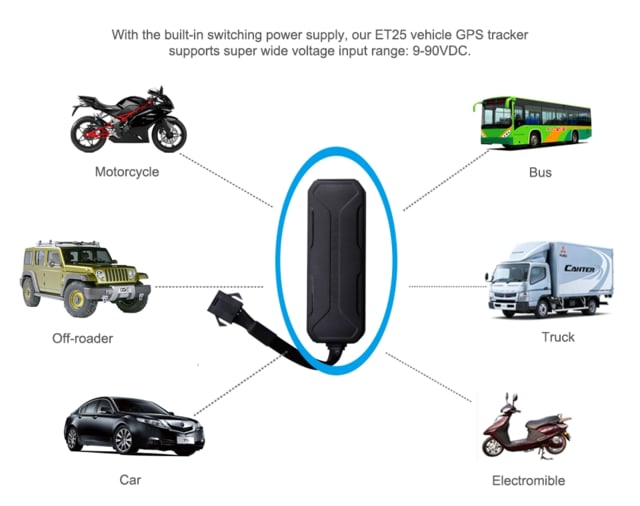Analysis of the Levels of NB-IoT Network Coverage by Concoxgarin

The narrowband Internet of Things(NB-IoT) was established in the 69th RAN Plenary of 3GPP. It is a cellular Internet of Things that has only begun to develop. It uses licensed spectrum resources to efficiently support low-rate IoT data transmission. Growing up to the present stage, the technology now has standardized standards. In the whole process of IoT application, the problems in the traditional mobile communication network technology can be solved efficiently, and the cost of terminal equipment capital investment can be reduced. The entire process of this technology can also save energy, and the application prospects are extremely wide.
NB-IoT application technology
NB-IoT is a cellular-based narrow-width Internet of Things, which is a major branch of the Internet of Things technology. It is created in a cellular network and can be deployed directly into a UMTS network or a GSM network, thereby reducing deployment costs. The main purpose of the NB-IoT technology application process is to achieve wide-area and deep coverage. Compared with the traditional mobile communication network, the coverage is enhanced by 20dB, and it can also be connected with large-capacity machines. In terms of reducing functional consumption, it is necessary to provide more than 10 years of support at 5Wh and reduce the cost per terminal equipment by more than 15 yuan. To achieve the above objectives has a greater test for modern technology research.
The network features of NB-IoT mainly include:
1. a wider coverage. With improved depth coverage, NB-IoT network coverage is 20dB higher than existing networks in the same frequency band.
2. the massive connection level, in theory, a sector can connect more than 50,000 terminals.
3. the function consumption is low, the standby time of the NB-IoT terminal module is ten years.
4. the module cost is lower, it is expected that a single connected module is under $5.

The NB-IoT mainly includes three deployment modes: protection band deployment, independent deployment, and in-band deployment. The various deployment modes can be used together with the existing network, specifically:
1. The independent deployment mode can be used in the rigged GSM band. The GSM channel bandwidth is 200 kHz, which can provide space for the NB-IoT 180 kHz bandwidth, and also has a guard interval of excess frequency.
2. The protection band deployment mode is implemented by a 180 kHz bandwidth resource block that is not used in the LTE edge protection band.
3. The in-band deployment mode is implemented by using an LTE carrier resource block. Compared with other modes, the independent deployment mode has fewer restrictions, and the coverage level is larger, which has better downlink performance. In the downlink coverage limitation, the coverage level of the independent deployment is higher than that of the protection zone.
Levels of NB-IoT Network Coverage

Concox NB-IoT electric bicycle GPS Tracker
1. repeat transmission. In this way, only the transmission time of the signal symbol is extended, and the repeated transmission is simple channel coding. Although the transmission rate of the information data is reduced, the reliability of the data transmission decoding and adjustment can be improved. It has an extremely significant efficiency advantage in the context of low signal to noise ratio. Generally, the ideal decoding error rate is 0.100, and the probability of error can be reduced by repeating the number of transmissions. When the repetition is repeated thirteen times, the error rate of decoding can be reduced to 0.0000099.
2. Through the current HARQ retransmission technology, the transmission time of signal symbols can be effectively extended, and the coverage of NB-IoT can be improved. At this stage, this technology has been applied to the VoLTE commercial network to prove that the NB-IoT signal coverage can be improved efficiently.
3. reduce the delay requirement and use power enhancement in part of the downlink physical channel, which can directly increase the signal coverage. In the coding technology, the current NB-IoT technology uses Turbo coding, and the traditional mobile communication network technology uses convolutional codes. The main advantage is that the required signal-to-noise ratio of the decoding is reduced, and the same coverage distance can be enhanced. Cover about 3-4dB.
4. Since NB-IoT IoT service requires less data transmission rate in the whole process of application, generally, it can meet most business data transmission requirements within 100bps, so low modulation technology can also be used to improve coverage. Select the area, use the multi-UE adjustment strategy and the MCS dynamic adjustment strategy in opponent to test whether the NB-IoT IoT receives FTP during the whole operation. The following figure shows the simulation results. Since the NBIoT channel bandwidth is narrower than that of the LTE network, the NB-IoT network receives a small number of bytes of traffic per second. As can be seen from the following figure, in the 20MHz bandwidth, the UE is deployed to a longer range, and the NB-IoT can communicate with the eNodeB, so the NB-IoT has a wide coverage.
The new NB-IoT network technology is a product of market demand and change. After the market is optimistic, machine and equipment manufacturers have established uniform indicators and level specifications in the whole process of standardization. The relevant industry chain is also actively testing this. In the near future, NB-IoT network technology will be used in various vertical industries to realize a new era of Internet of Everything.
More product info: www.iconcox.com

Comments